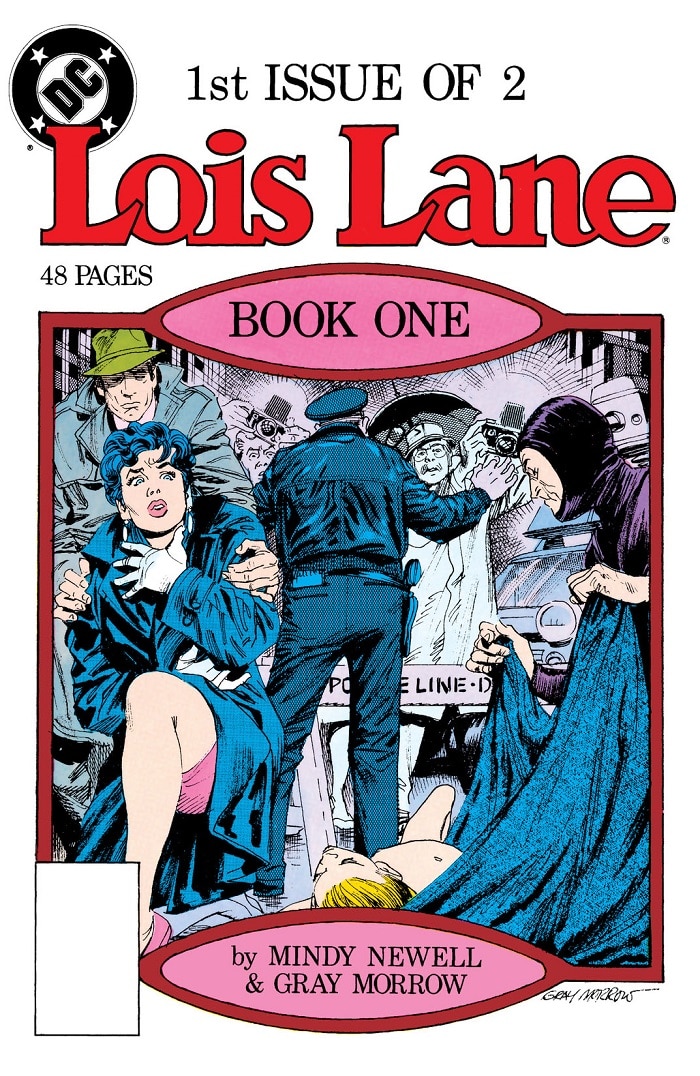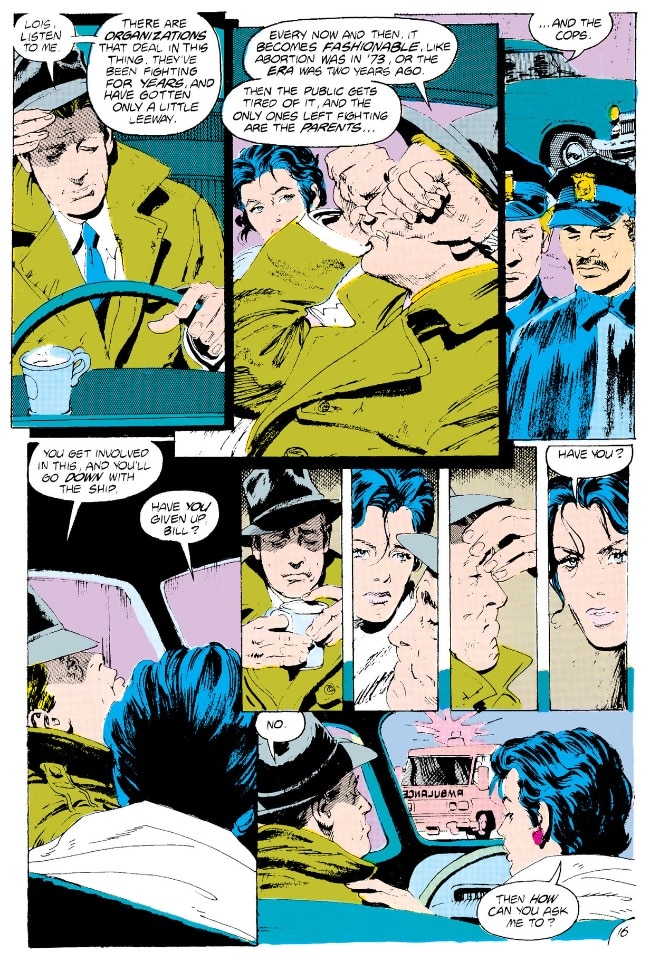When most of us think of Lois Lane a few things come to mind. She's a wildly talented journalist, she springs eternal as a foil and partner to Superman and his sweet alter-ego Clark Kent, and most of her adventures have been wacky, fun, or at least hopeful. But in 1986—fittingly as it was the most important year in sparking the “grim and gritty” trend—Superman's Girlfriend was given a far more miserable case to solve as Mindy Newell and Gray Morrow took on the heroic journalist for two noir-steeped issues that pushed Lois into a new realm.
Beginning in the oversized 48-page Lois Lane #1, this two-part story lets us know we’re in new territory right from the start with its shocking, yet beautifully designed Gray Morrow cover that shows Lois looking on in horror at the fully visible body of a dead naked child. The shock value exists for a reason, though, as Mindy Newell's three-page editorial letter explains that the story was published to highlight the massive amount of missing children in America. Mindy also offers tips on how to keep kids safe and discusses the importance of educating kids and parents on the topic. While Lois Lane #1 and #2 aren't your classic PSA comics, they do have a strong message that comes through while telling an unapologetically dark and upsetting story.

In her first major spotlight since Crisis on Infinite Earths, Lois is now single and still a roving reporter at the Daily Planet. Clark is dating and living with Lana Lang, and Lois' sister Lucy is back on the scene trying to reconnect with Lois. So, a lot's going on even before our protagonist goes on a date and stumbles upon a murdered child and case that no one but her wants to take on. She's also battling against her new hardheaded City Editor, McCullogh, who is still holding a so-called "botched" story in the Middle East that she was working on before the series began.
It's a setup that immediately puts Lois on the backfoot. There's no Superman to save her and no Clark to comfort her, which means we get to see her at her feistiest and scrappiest. It also seems to be one of the last stories that continued the pre-Crisis Earth-One continuity on the post-Crisis New Earth before John Byrne's The Man of Steel reset the Superman line the month after this miniseries ended.

While that's an interesting continuity note, the real conversation to be had here is why this Lois Lane miniseries isn't mentioned alongside The Dark Knight Returns and Watchmen when it comes to the importance of 1986 as the year that redefined comics. Lois Lane #2 was released the same month as Watchmen #1 and both issues of this mini ran the iconic "Who Watches the Watchmen?" cover ads in the UPC box. While those seminal works are seen as trailblazing in changing the perception of what comics can be and what they can cover, Lois Lane is arguably a darker book than either of them. Neither Frank Miller nor Alan Moore and Dave Gibbons deigned to put a dead child on the cover of their series, and while their stories were violent metatexts on culture as a whole, Newell and Morrow make their commentary on missing and murdered children text to the point where it feels explicit.
It's not just the content of the comic, however, but also the way it's presented. Lois Lane #2 ends with fictional newspaper clippings that build out the world, the same kind of backmatter that Alan Moore is often credited with revolutionizing to this day. Yet Newell and Morrow's addition to this canon is never mentioned. There's also the large amount of editorializing that Newell did with her op-eds in each issue, which is sadly not included in the DC UNIVERSE INFINITE digital edition, but that can be read in the single issues which are still relatively easy to find.

One has to assume that a big reason 1986’s Lois Lane likely hasn't been considered in the same way is that many readers came to Watchmen and The Dark Knight Returns via their now iconic—and still regularly bestselling—trade collections. But despite being almost 100 pages long, Newell and Morrow’s two issues have never received their own collection, meaning that people have to discover them in the back issue bins or online. It would be interesting to see this forgotten gem get a prestige hardcover or softcover rerelease, especially as Lois is still as popular as ever. Until then, however, this hard-hitting cautionary tale is well worth hunting down.
Lois Lane #1 and #2 by Mindy Newell and Gray Morrow are available to read on DC UNIVERSE INFINITE.
Rosie Knight is an award-winning journalist and author who loves Swamp Thing, the DC Cosmic and writing the monthly gossip column here at DC.com. You can also listen to her waxing lyrical about comics, movies and more each week as she co-hosts Crooked Media's pop-culture podcast, X-Ray Vision.
NOTE: The views and opinions expressed in this feature are solely those of Rosie Knight and do not necessarily reflect those of DC or Warner Bros. Discovery, nor should they be read as confirmation or denial of future DC plans.




















